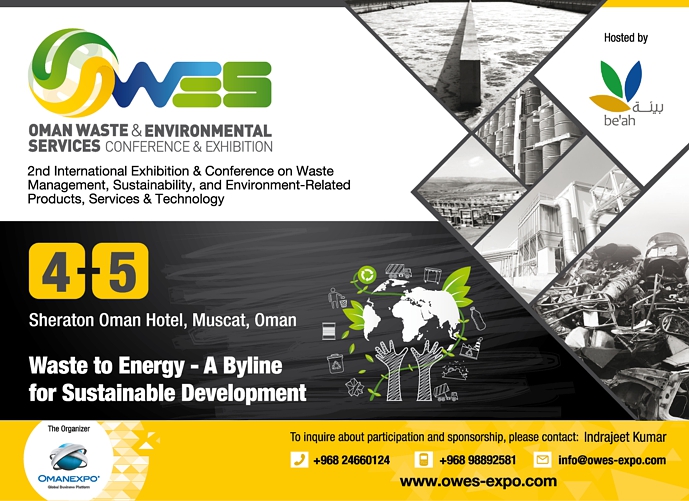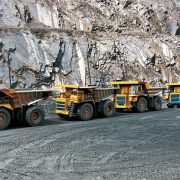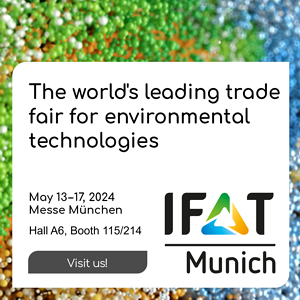Canada‘s Waste Management Policy: Coming in Parts but Winning Together
The balance of the Conference Board of Canada based on figures from 2009 was poor: Canada ranked in last place out of 17 countries and got a “D” grade on the municipal waste generation report card. Canada produced 777 kilogram per capita of municipal waste in 2008, which was twice as much as the best performer, Japan.
The latest figures published by the Conference Board show Canada ranking the 15th place, an average of 720 kilogram of waste produced per capita and at least Nova Scotia earning an “A” grade. This certainly suggests a little bit of a progress, but is Canada actually on target to a recycling nation?
Few weeks ago, Statistics Canada offered latest official data on the Canadian waste management industry. The total amount of waste diverted to recycling or organic processing facilities has increased by 7 percent compared with 2012 to 9.1 million tons in 2014. Diverted materials from residual sources added up to 4.8 million tons; waste from the non residual resources sector – industry, commerce and institutions as well as the construction, renovation and demolition branch – amounted to 4.25 million tons. A new information on the total amount of waste was not given, just as little as specifications on the materials diverted from landfill or their recycling rate.
25 percent diverted from landfills
Elder figures from 2012 indicate that 25 million tons were disposed of in landfills or incinerators, according to the Conference Board of Canada. The remaining 8.4 million tons (25 percent) were diverted from landfills by recycling, reuse or composting. Of the diverted tonnage, 40 percent was paper and related materials, and 29 percent was compostable organic materials. The remaining 31 percent were mainly glass, metals, plastics, household appliances and materials used in construction. Official data from the Environment and Climate Change Agency make clear that 33.5 million tons of solid waste was disposed of and diverted in Canada in 2012. 25.2 percent of the total waste generated was diverted from disposal. The diversion from residential sources – mostly households – reached 32.7 percent, while the share of waste diverted from non-residential sources had stayed relatively stable by under 20 percent. The solid waste diversion resulted in the capture of 3.36 million tons of paper, 2.45 million tons organic materials, 640,000 tons of waste from the construction, renovation and demolition sector, the same share of metals, 410,000 tons of glass and little above 300,000 tons of household appliances, plastics and other materials each.
Plastic recycling – key to circular economy
In fact, there is some interest in recycling of paper and cardboard. Since several years the Carton Council of Canada registers a positive growth trend nationally remains committed to continuing to raise the recycling rate by focusing on recycling education and optimizing the end-of-life management of used cartons. In 2016 the CCC balanced that the national recycling rate for food and beverage cartons had grown significantly to 52 percent in 2015.
For treatment of organic waste, Ottawa for example instituted a green bin program in 2010 to collect and compost organic waste. According to Conference Board of Canada, many other cities have similar green bin programs or other programs to collect residential organic waste, including Vancouver, Toronto, Montréal, Moncton and Halifax. But great differences among the territories must be confessed: Nova Scotia diverted 150 kilogram of organics per capita and the Canadian average lay at 70 kilogram in 2012, whereas Manitoba not even reached 20 kilogram.
The annually produced Construction and Demolition (C&D) waste is estimated at about 9 million tons, accounting for one-third of Canada’s solid waste stream. The sector is regulated by differing municipal directives, for example by-laws to outlaw the landfilling of specific construction material. Provincial steps to regulate reduction measures for C&D waste have only been undertaken by Ontario and British Columbia. So far, binding federal legislation on treatment of construction and demolition are not documented.
In April 2017, Carol Hochu, President and CEO of the Canadian Plastics Industry Association, announced a collection for recycling rate of 79 percent for plastics material. Seventy-nine percent of the reported 322,000 tons of material was reclaimed in Canada or the U.S., and 17 percent was exported overseas. Joe Hruska, VP Sustainability at CPIA, declared that “Canada‘s plastic recycling infrastructure is key to our circular economy”. Astonishingly, Statistics Canada lately reported officially that electronic waste recycling continued to increase in popularity, totaling just over 83,000 tons in 2014, an 18.4 percent increase in contrast to 2012. And ferrous metals showed the next greatest increase, rising by 13.8 percent over 2012 to nearly 525,000 tons.
Canadian governments began targeting the management of e-waste about 15 years ago. To date, e-waste management has become an important issue in Canada, as already in 2010 an estimated 224,000 tons of e-waste were generated there. In 2008, just over 24,000 tons of e-waste were sent for diversion via programs administered by or for municipalities, and 2010 some 150 E-refurbishing & E-recycling facilities existed across the country. Meanwhile, the Electronic Products Recycling Association (EPRA) is spread all over Canada managing 2,300 convenient collection sites, diverting 100,000 metric tons of old electronics annually and balancing the recycling of 660,000 tons since 2007.
Nearly all territories have passed regulation establishing the collection and recycling of designated electronic products, and several established a funding system for the collection of this material. The programs are ultimately substituted by consumers through eco-fees applied at the point of retail. The industry generally develops and implements product stewardship plans. Nine provinces have already installed Extended Producer Responsibility laws and programs; Yukon and Northern Territories were developing them.
Jurisdiction territorially particularistic
In 2014, a comprehensive paper on Canadian‘s state of waste management reported still improvable waste management in some territories, little use of broad-based regulatory instruments for landfill bans on divertable materials, only two territories operating with levies on waste disposal at landfills and low landfill tipping fees in some Canadian jurisdictions. On the other hand, more than 70 regulations, standards and guidelines applicable to solid waste disposal, regarding landfilling and incineration throughout the territories are listed. And there are partially jurisdictions on waste prevention and waste reduction at source, on diversion, on monitoring and reporting of different materials and on disposal – following territorially particularistic directives and targets.
Initiatives growing
But there are some Canada-wide initiatives too involving several governmental departments. The Canadian Council of Ministers of Environment for example acts as a forum for 14 provincial, territorial and federal environment departments; its Waste Management Task Group is responsible for the waste management work. The Canadian Standards Association is a Canada-wide not-for-profit organization to develop norms for standards. The Federation of Canadian Municipalities administers the 550 million US-Dollar containing Green Municipal Fund and founding member of the National Zero Waste Council.
Innovative practices on waste prevention include the “Business Case for Zero Waste in British Columbia” report, the regular municipal performance monitoring to track waste disposal in Nova Scotia and the required regional waste plans for designated municipalities in Québec, British Columbia and Nova Scotia. Innovative practices on waste diversion are shown by the Electronic Product Recycling Association in establishing product stewardship programs, by the operations of the National Used Oil Management Association and by the Canadian Stewardship Services Alliance offering a one-stop-shop for stewards, not to mention the voluntary industry full “Closed Loop” Recycling Program. In order to innovate waste disposal, many territories have been regionalizing their waste management facilities, several use disposal levies to fund new infrastructure, and Halifax Regional Municipality via by-law requires construction, renovation, and demolition waste to be segregated and diverted to a specialized processing center.
A branch of 7.1 billion US-Dollar revenues
The latest Canadian Industry Statistics, 2015 edited by the national Government, presented an overview of the different facilities and services of the waste branch. The schedule – sorted by ascending average revenue between 518,600 US-Dollar and 855,600 US-Dollar – starts with “waste management services” in a total of 1,372 establishments and a profitability rate of 80,4 percent. 2,480 establishments for “remediation and other waste management services” sum up the revenue of remediation and clean-up of contaminated sites and the operation of material recovery facilities, reaching a profitability rate of 78 percent. The 2,049 “waste collection institutions” including waste transfer stations show a profitability of 79.5 percent. Further the branch of 5,871 “waste management and remediation services“ obtains 78.1 percent profitability. 375 “material recovery facilities” achieve a rate of 69.2 percent, while 733 “remediation services” are primarily engaged in remediation and clean-up of contaminated buildings, mine sites, soil or ground water: Their profitability rate lies at 77 percent. On the whole, Canadian businesses in the waste management industry had total revenues of 7.1 billion US-Dollar in 2014, up from 6.4 billion US-Dollar in 2012. And waste management activities in the public and private sectors provided full-time employment for almost 35,000 people across Canada in 2014.
Already in the mature stage of its life cycle
With its “Vision 2050 – The New Agenda for Business Report” the World Business Council for Sustainable Development outlined a pathway for a global population living within the resource limits of the planet by 2050 – including reduced raw materials and re-engineered materials leading to closed-loop recycling and a circular approach to resources. In 2014, the Canadian Council of Ministers of Environment had to admit that their country was a long way from achieving the 2050 Vision objectives and the OECD commitments. But business analyst IBISWorld gives the branch a good testimony. Higher recycling volumes, increased regulation and greater demand for recycled materials delivered the basics. The waste treatment and disposal services industry only grew slightly over the past five years. However, in that period, the recycling facilities industry – after the opening of 80 new facilities in 2012 – has performed well with revenue growing and is forecasted to go on similar positive until 2022. Increased levels of industrial capacity utilization and steady construction activity throughout Canada have benefited the scrap wholesalers. And waste collection services could record an increased demand from municipalities seeking to privatize their waste capture systems.
This sector passed through a concentration process: The Progressive Waste Solution Ltd, now trading under Waste Connections of Canada, and Houston based Waste Management Inc. meanwhile capture more than 70 percent of the total industry revenue. Commenting on the results for the first quarter of 2017, Ronald J. Mittelstaedt, Chairman and Chief Executive Officer of Waste Connections, was highly pleased: “2017 is off to a great start, with 15 percent same store landfill tonnage increases, better than expected contribution from recent acquisitions, increased exploration and production waste as well as waste activity, and higher recycled commodity prices all driving results above our outlook for the first quarter.“
Photo: Eric / fotolia.com
GR 22017










